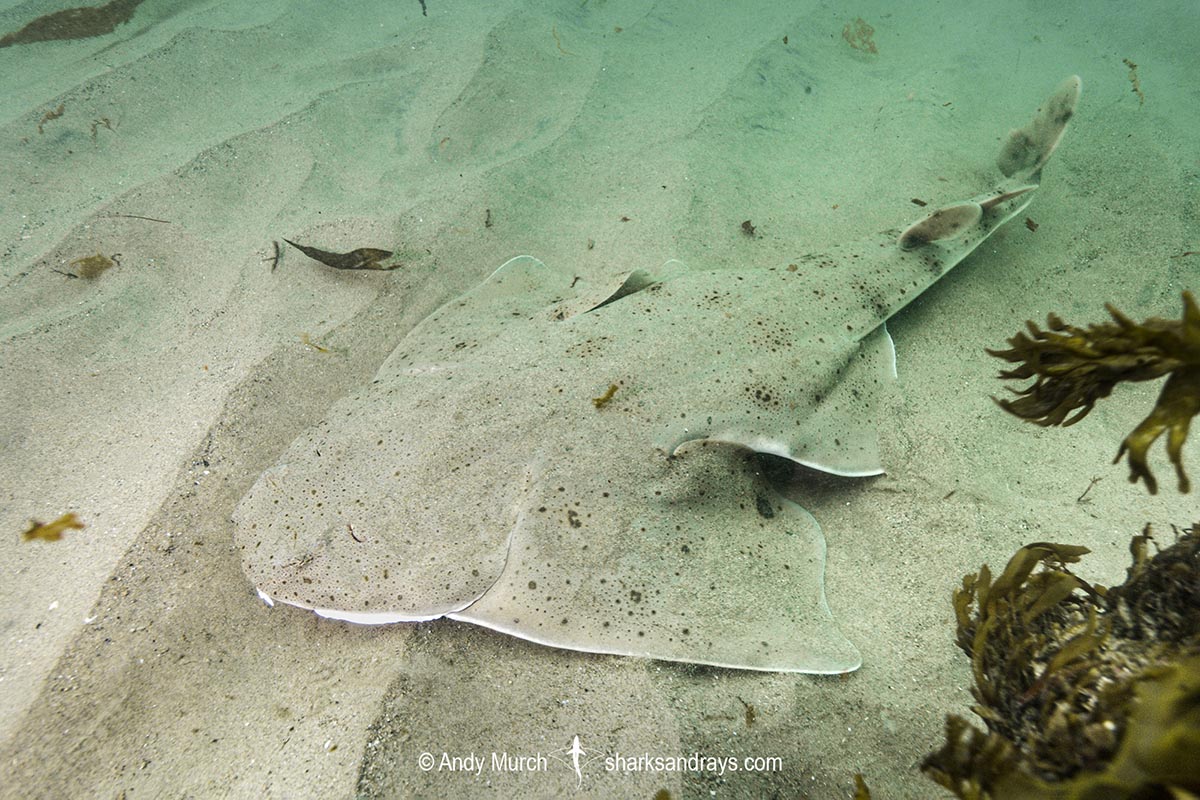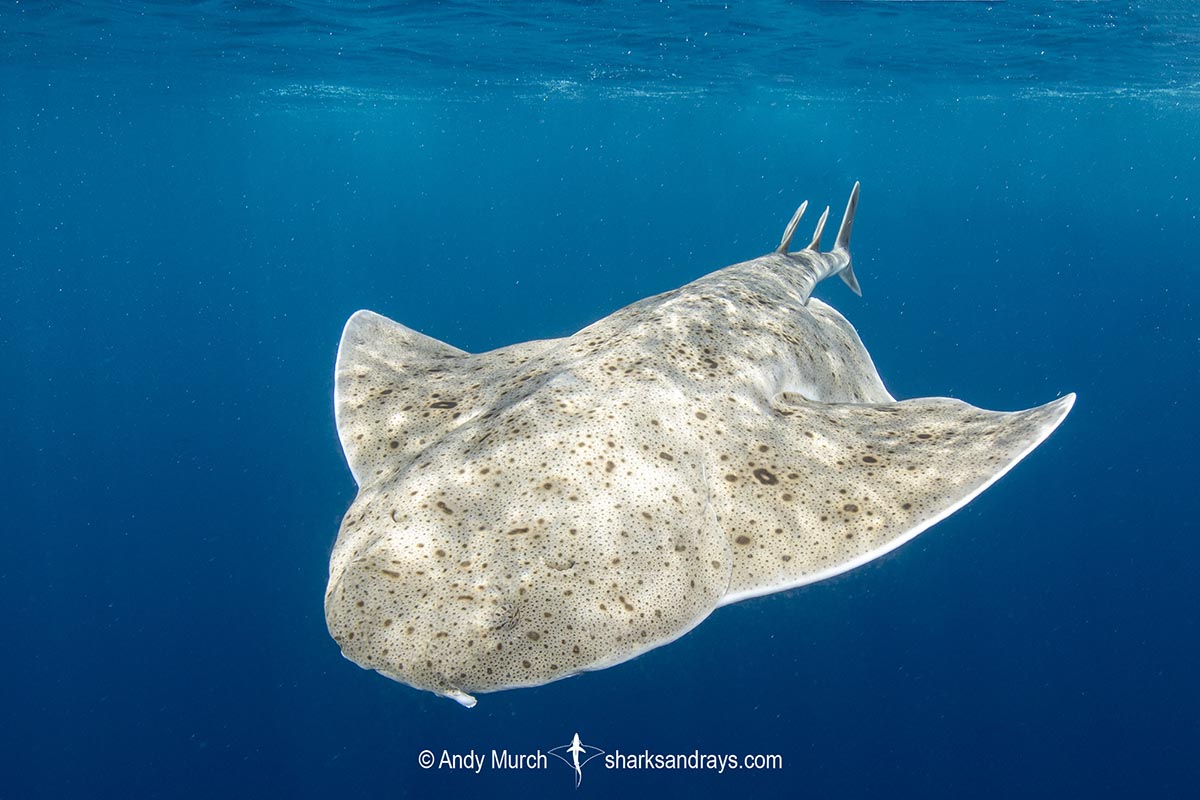Common names
Pacific Angelshark, Californian Angel Shark.
Binomial
Squatina californica.
Synonyms
Rhina philippi.
Identification
A large angelshark species with short, un-fringed, spatulate barbells. Anterior nasal flaps weakly fringed. Elongated spiracles wider than eye width. Distance from eye to spiracle about 1.5x eye width. Concave forehead between eyes. Rows of thorns prominent in juveniles; small or absent in adults.
Dorsal coloration light tan to reddish brown with numerous very small dark spots and some eye-sized dark spots. Two larger dark spots form ocelli (fake eye spots) on each pectoral fin. Dorsal margin white. Ventrum pale.
Size
Maximum size 175cm. Size at birth 25-26cm.

Conservation Status
NEAR THREATENED
The Pacific Angel Shark was the subject of a targeted fishery in California in the late 1970s which lead to significant declines. Once conservation measures were put in place (including a ban on nearshore gillnetting) the population stabilized and is locally assessed as ‘Least Concern’.
South of the border, the Pacific angelshark remains a targeted species. If fishing pressure continues in Baja California, it is predicted that this species will reach the criteria for ‘Critically Endangered’ within the next few generation lengths.

Habitat
Sub-tropical and temperate sandy substrates, often close to monumentation such as rocky reefs or kelp forests where food is abundant. Inshore to edge of continental shelf. From 2-200m. More commonly 3-100m.
Distribution
Eastern Pacific. From southeast Alaska to Baja California. Records from the Pacific coast of South America likely refer to the South Pacific Angel Shark (Squatina armata).
Reproduction
Like other squatinids, the Pacific angelshark is an aplacental viviparous species. 1-11 pups per litter. Gestation approximately 10 months. Pups are born between March and June.
Diet
Feeds on small fishes including queenfish, blacksmiths, gobies and juvenile sea bass. Also consumes sea cucumbers.
The Pacific angelshark is an ambush predator that lays on the substrate partially covered by sand. When a fish swims within range, the angelshark explodes upwards from its concealment, mouth agape and clamps down on its prey.
Behavior
The Pacific angelshark remains motionless (waiting for prey to swim near its mouth) for long periods each day. Returns to the same resting/hunting spot each day. Presumably relocates if prey becomes scarce.
Reaction to divers
Easy to approach. Remains motionless, relying on camouflage. Will bolt if molested.
Diving logistics
The Pacific angelshark is quite common at various sandy areas adjacent to reefs or kelp forests in Southern California. At the West end of Santa Cruz Island they are very abundant. They are fairly abundant throughout the Northern Channel Islands. The deep sand around Ship Rock at Catalina is a good spot. And in the South Bay you can find them at Malaga Cove.
North of Santa Barbara, they can be encountered on shore dives at Tajeguas Beach.
The best way to search for angel sharks is to swim along the edge of the reef, about 2m above the sand, in rocky or kelpy areas where the sharks have sand they can hide under and access to a good supply of fishes.
Although the shark will likely be buried under a fine covering of sand, their outline is often somewhat visible. Even if the outline of the angelshark is obscured, they always keep their eyes and spiracles exposed. After a few encounters, you should be able to pick out the signs of a shark’s presence more easily.
Once you have located a shark, with slow, non-aggressive movements, it is usually possible to settle down next to it and gently fan away most of the sand to get a better look. This does not distress the animal or significantly waste its energy because one or two pectoral fin flaps will completely cover it again. Be careful not to wave your hand too close to its mouth to avoid a demonstration of its incredibly fast bite reflex!










